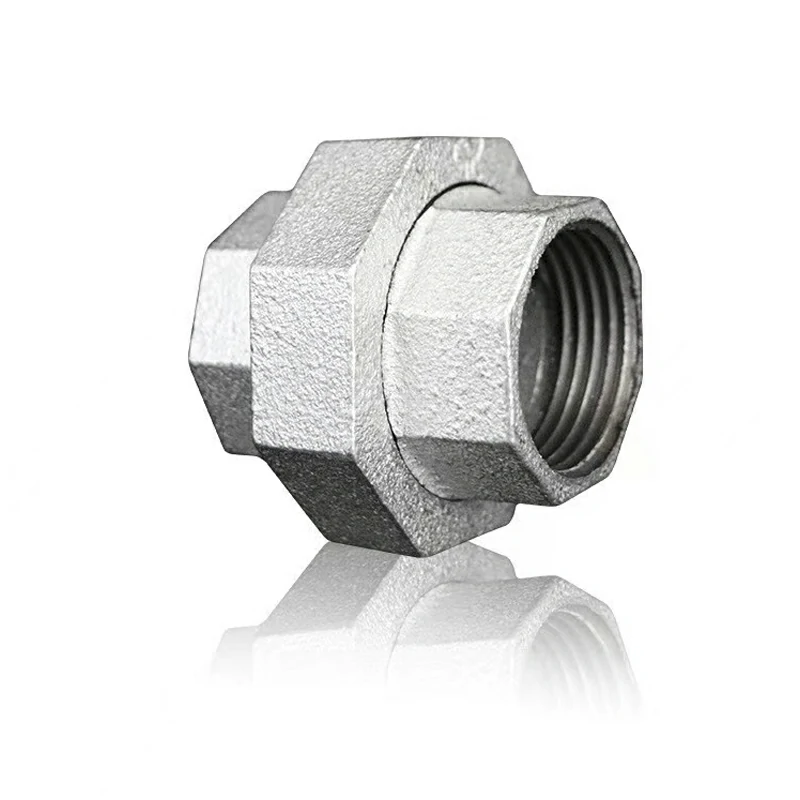Testing gas pipe unions for performance and reliability is a crucial step to ensure their safe and effective operation under various operating conditions. The testing process involves subjecting the unions to simulated or real-world conditions to assess their durability, leak-tightness, and overall functionality.
Here are common testing methods for gas pipe unions:
- Pressure Testing:
- Gas pipe unions undergo pressure testing to assess their ability to withstand the operational pressure of the gas distribution system.
- Hydrostatic testing is commonly used, involving pressurizing the union with water to a predetermined level and monitoring for leaks or structural issues.
- Leakage Testing:
- To ensure gas pipe unions are leak-tight, they undergo leakage testing under specified pressure conditions.
- This involves pressurizing the union and using a detection method, such as soap solution, to identify any escaping gas.
- Thermal Cycling Tests:
- Gas pipe unions may be subjected to thermal cycling tests to simulate temperature variations they might experience in real-world applications.
- Cycling between high and low temperatures helps assess the union’s ability to maintain integrity under temperature-induced stress.
- Vibration Testing:
- Vibration tests simulate mechanical stress, such as those induced by operational vibrations or external factors.
- The union is subjected to controlled vibrations to ensure its components remain securely fastened and functional.
- Torsional Testing:
- Torsional tests assess the resistance of the union to twisting forces. This is important to evaluate its structural integrity under different installation conditions.
- The union is subjected to controlled torque to ensure it can withstand installation and operational stresses.
- Impact Testing:
- Impact testing evaluates the union’s resistance to impact forces, simulating potential accidents or external impacts.
- The union is struck with a controlled force, and its response, deformation, and any resulting damage are observed.
- Endurance Testing:
- Endurance or fatigue testing involves subjecting the gas pipe union to repeated cycles of stress and pressure to simulate long-term usage.
- This helps assess the union’s durability and its ability to maintain performance over an extended operational life.
- Chemical Resistance Testing:
- Gas pipe unions may be exposed to chemicals commonly found in gas distribution systems to test their resistance to chemical corrosion.
- This is especially important for unions in environments with potential chemical exposure.
- Seal Performance Testing:
- Testing the performance of seals is critical to ensuring the gas pipe union’s leak-tightness.
- The seals are subjected to conditions that mimic their exposure to gas and varying temperatures to assess their long-term performance.
- Flame and Fire Resistance Testing:
- Gas pipe unions may undergo flame and fire resistance testing to ensure they can withstand fire exposure without contributing to the spread of flames.
- This is crucial for safety in case of fire incidents.
- Corrosion Testing:
- Corrosion testing evaluates the resistance of materials used in the gas pipe unions to corrosion.
- Accelerated corrosion tests simulate harsh environmental conditions to assess the longevity of the unions.
- Assembly and Disassembly Testing:
- The ease of assembly and disassembly is tested to ensure that the union can be efficiently installed and maintained.
- Repeated assembly and disassembly cycles help assess the wear resistance of components.
- Quality Control Checks:
- Regular quality control checks are conducted throughout the manufacturing process to ensure that each union meets specified standards.
- These checks may include dimensional inspections, material composition analysis, and visual inspections.
- Compliance Testing with Standards:
- Gas pipe unions are tested to ensure compliance with relevant industry standards and regulations.
- Standards set by organizations such as ANSI, ASME, gas pipe union and others are followed to guarantee the safety and reliability of the unions.
- Field Testing:
- Some gas pipe unions may undergo field testing in real-world gas distribution systems.
- Field testing provides insights into how the unions perform under actual operating conditions.
These testing methods collectively ensure that gas pipe unions meet stringent performance and reliability standards, providing confidence in their use within gas distribution systems. Manufacturers often conduct a combination of these tests to comprehensively evaluate the unions’ performance under a range of conditions.
